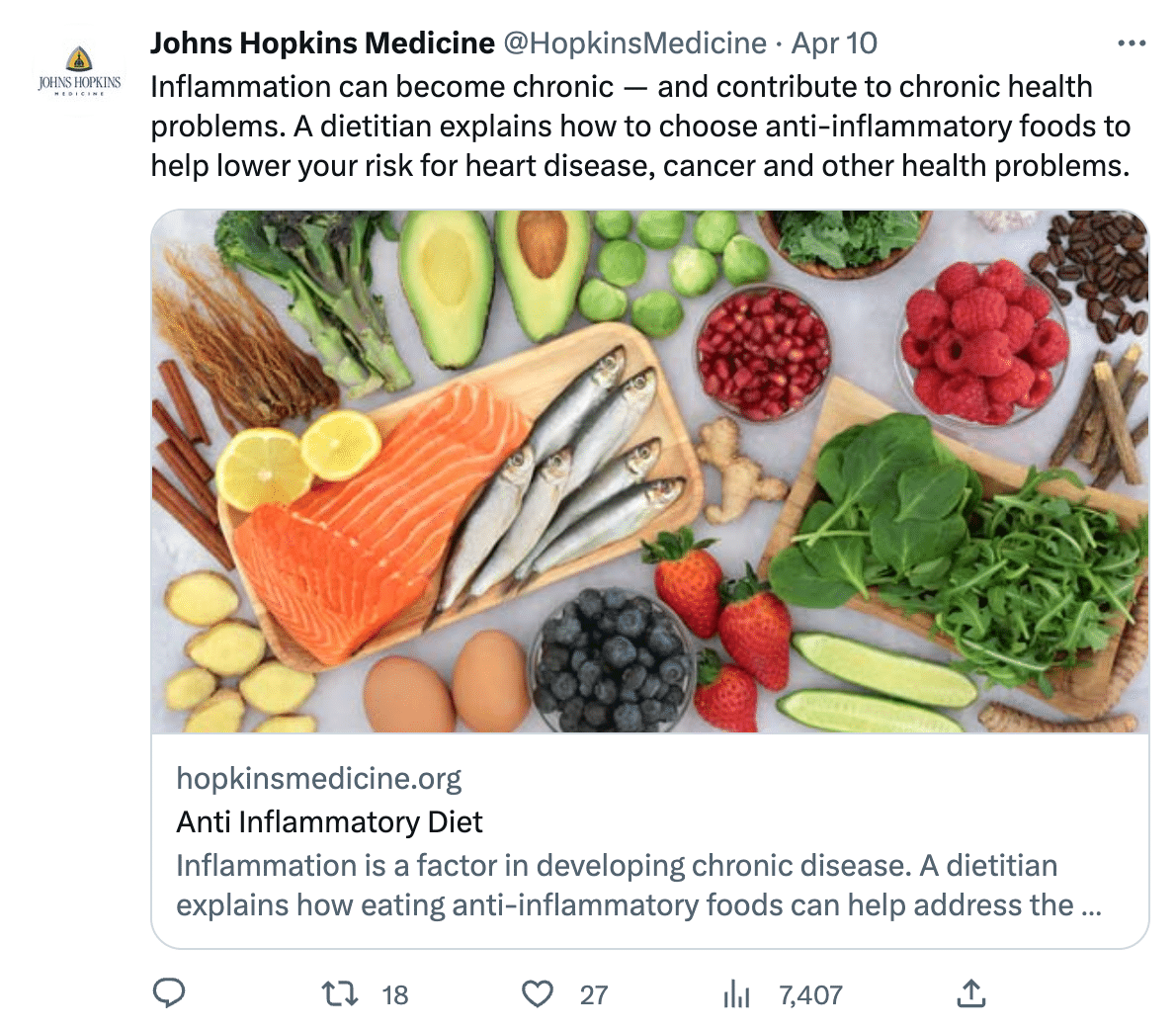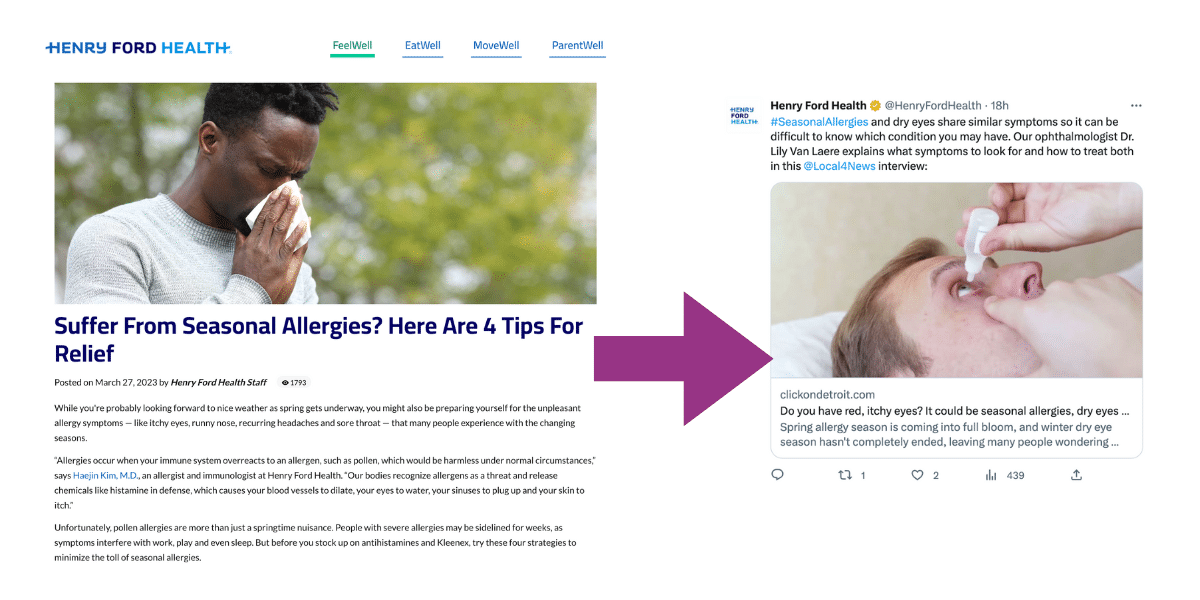
Updated April 2023
Keeping the content engine churning is no small feat. You have to manage content across your organization’s website and all of your social media channels. But you don’t have to keep coming up with new content all the time.
Repurposing website content can lighten your load. We offer 4 tips for keeping your social media calendar chock-full of content that keeps users coming back for more.
Your Social Media Calendar Is Key to Winning Content
Social media can’t be done on the fly. Successful organizations maintain (and grow) their following through consistent posting and engaging content. To do this, you need a plan. Enter the social media calendar.
It helps you organize upcoming posts across channels and by publish date. It may include copy subject, links and format (like video, text, story). The more information, the better.
And frequency is critical. You need a lot of posts to stand out from competitors and get through to your audience.
Here are Sprout Social’s recommendations by platform per day:
• Facebook: 4 to 5
• Instagram: 1 to 2
• LinkedIn: 1
• TikTok: 1 to 4
• Twitter: 3 to 4
• Pinterest: 1
Use What You Have to Create a Strong Social Media Calendar
A robust social media calendar helps you stay organized while delivering a steady stream of content. It helps you consistently deliver material that’s on-brand, clickable and consistent with your marketing strategy. But coming up with new content every month is challenging.
Here are 4 tips for repurposing your website content and filling up that calendar:
1. Comb through digital marketing assets
You are likely sitting on a treasure trove of social media content. Skim through blog posts, newsletters, e-books and case studies for inspiration.
Maybe there are surprising stats you can tweet. (“24 hours after quitting smoking, your risk of heart attack goes down.”) Or you have a blog post with 5 tips. (“Protect your skin from the sun with these 5 tips.”) A back-to-basics approach can also help. (“Time for a checkup? When it’s time to see your doctor.”) Look for interesting facts about the conditions you treat or expertise within your physician directory.
And don’t post it all at once. Think of interesting ways to sequence the content. Maybe create a series where you post one interesting fact, stat or tip on a specific topic each day. Or a weekly series highlighting different members of your clinical team. (“Meet the labor and delivery team at our hospital.”)
Read more: Turn Hospital Website Content Into Social Media Material: 7 Examples.
2. Add visuals to make it pop
Visual appeal is not a “nice-to-have.” It’s a must. Algorithms on many social media channels rank posts with video, graphics and photos higher than ones that are text-only.
You don’t need an in-house graphic design team to accomplish this. Authentic photos of your team or facility will get attention. For a more polished look, stock photos are often available for free on sites like Pexels and Unsplash. And tools like Canva and PicMonkey make it easy to create share-worthy social posts.
A simple stock photo helps this Twitter post from Johns Hopkins Medicine stand out.
3. Cross-post, but don’t replicate content across channels
Don’t cut and paste the same message across social channels. Each channel has its own audience, and they’re expecting different types of content. Users who follow you on multiple platforms may notice the repetition and pay less attention to future posts.
Another drawback is that content uploaded on one social media platform often gets branded with that channel’s logo. Posting the logoed content on another channel might not rank favorably in the second channel’s algorithm.
A hack to consider is using the same base content but tweaking it for different channels. If you’re posting an article about yoga on Facebook, create a related poll on Twitter about preferred yoga poses for stress reduction. You can also share an image with a tip or quote on Instagram about the mental health benefits of yoga. And perhaps you can get a clinician to make a quick video and post on TikTok sharing some yoga moves.
4. Consider newsjacking
Look to the news for content ideas that keep your feeds fresh. Also known as newsjacking, this approach enables you to take advantage of buzz-worthy topics. Ride the wave by sharing repurposed content and suavely weave in what your organization has to offer.
This is a great opportunity to combat medical misinformation with stone-cold facts from your content. Or, if an uncommon diagnosis comes to light — let’s say a celebrity is diagnosed with a rare blood disorder — you can be among the first to help the public learn more about it.
You can also lean into seasonal topics. Is allergy season around the corner? Time to recycle last year’s seasonal allergy blog post. Put an interesting statistic on Twitter. Tease tips on Instagram. List common symptoms on Facebook.
Related: How to Increase Website Traffic: Newsjacking + Fresh and Repurposed Blog Content
More Tips for Getting Stellar Social Media Results
Check out these posts for additional social media best practices:
- Use Social Media Trend Data to Boost Content Ideation
- 10 Healthcare Brands to Watch on TikTok
- 5 Hospitals Crushing It on Social Media
- 10 Best Hospitals on Instagram
- Using Pinterest in Hospital Marketing
Need more traffic and conversions from your social media channels? Let us help you create content that gets your audience to take action. Contact us today!






